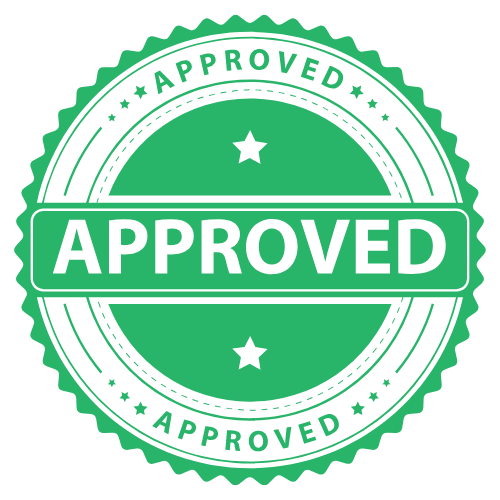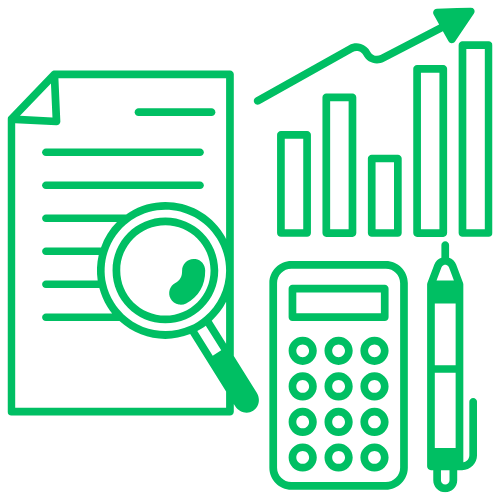Master the Art of Grant Writing for Nonprofits
Comprehensive guides, practical tools, and expert insights to help your nonprofit secure the funding it needs to make a lasting impact.
Grant Fundamentals
Comprehensive guides to help nonprofits navigate the grant landscape and maximize funding opportunities
Types of Grants
Comprehensive overview of grant categories available to nonprofits:
- Program/Project Grants – Funding for specific initiatives
- General Operating Support – Unrestricted funding for day-to-day operations
- Capacity Building Grants – Strengthen organizational infrastructure
- Capital Grants – Support for equipment or facility improvements
- Challenge/Matching Grants – Require fundraising matches
- Seed Funding – Initial support for new programs
- Research Grants – Support for nonprofit research initiatives
- Emergency/Disaster Relief Grants – Immediate response funding
Funding Sources
Understand different grant-making entities and their focus areas:
- Private Foundations – Family and corporate foundations
- Community Foundations – Local focus and community impact
- Government Grants – Federal, state, and local funding
- Corporate Giving Programs – Direct business support
- International Donors – Global funding opportunities
- Faith-Based Organizations – Religious affiliation grants
- Professional Associations – Industry-specific support
Eligibility Requirements
Essential qualifications and documentation needed:
- Tax-Exempt Status – 501(c)(3) certification requirements
- Operational History – Minimum years of operation
- Financial Documentation – Audited statements and budgets
- Board Structure – Governance requirements
- Geographic Restrictions – Service area limitations
- Program Alignment – Mission compatibility
- Reporting Capacity – Grant management abilities
- Compliance History – Track record of grant management
- Partnership Requirements – Collaboration credentials
Application Process
Step-by-step guide to the grant application journey:
- Research Phase – Identifying suitable opportunities
- Letter of Intent – Initial proposal submission
- Full Proposal Development – Comprehensive application
- Budget Preparation – Financial planning and justification
- Supporting Documentation – Required attachments
- Review Process – Internal evaluation steps
- Submission Procedures – Technical requirements
- Follow-up Protocol – Post-submission communication
Timeline Management
Critical dates and deadlines in the grant lifecycle:
- Annual Grant Cycles – Recurring opportunities
- Pre-Application Deadlines – Early submission requirements
- Internal Review Periods – Organizational preparation
- Submission Windows – Application timing
- Funder Review Timeline – Decision process duration
- Award Notification Dates – Response timeframes
- Implementation Schedule – Project timeline planning
- Reporting Deadlines – Progress updates and final reports
Compliance Requirements
Essential regulations and reporting requirements:
- Legal Compliance – Federal and state regulations
- Financial Tracking – Fund management systems
- Progress Reporting – Impact measurement
- Audit Requirements – Financial review processes
- Document Retention – Record keeping policies
- Program Evaluation – Outcome assessment
- Acknowledgment Protocol – Funder recognition
- Amendment Procedures – Change management
Grant Readiness Assessment
Get a comprehensive evaluation of your organization’s grant readiness and personalized recommendations
Analyzing your responses…
Grant Writing Guide
Executive Summary
The executive summary is the cornerstone of your grant proposal. It serves as both an introduction and a miniature version of your full proposal, capturing the reader’s attention and conveying your project’s essence in a concise, compelling manner.
Key Components
- Problem Statement: Clearly identify the issue your project addresses
- Proposed Solution: Outline your approach and methodology
- Organization Credibility: Highlight your expertise and track record
- Funding Request: State the amount needed and expected impact
Example Executive Summary
“Environmental Youth Education Initiative seeks $50,000 to address the critical lack of environmental education in underserved communities. Our proven curriculum has reached 5,000 students across 15 schools, demonstrating a 40% increase in environmental awareness and sustainable practices. With this funding, we will expand our program to reach an additional 3,000 students in 10 new schools over the next academic year.”
| Component | Length | Key Elements |
|---|---|---|
| Problem Statement | 2-3 sentences | Clear issue identification, supporting data, urgency |
| Solution Overview | 3-4 sentences | Proposed approach, methodology, expected outcomes |
| Organizational Background | 2-3 sentences | Relevant experience, success metrics, capacity |
| Funding Request | 1-2 sentences | Amount, timeline, specific use of funds |
Problem Statement
The problem statement forms the foundation of your grant proposal. It must clearly articulate the issue your organization aims to address, supported by compelling evidence and data.
Essential Components
- Clear issue definition
- Target population affected
- Geographic scope
- Supporting statistics
Best Practices
- Use current data
- Cite credible sources
- Show urgency
- Demonstrate expertise
Example Problem Statement
“In South Phoenix, 40% of households with school-age children lack reliable internet access, affecting over 15,000 students’ ability to participate in remote learning. Recent district surveys indicate that 68% of these students experienced significant academic challenges during the 2023-24 school year, with math and reading scores declining by an average of 23% compared to pre-pandemic levels. Without immediate intervention, these educational disparities threaten to create long-term academic and economic disadvantages for our community’s most vulnerable youth.”
Structure Analysis
- Issue Definition: Digital divide affecting education
- Scope: South Phoenix area, 15,000 affected students
- Data Support: Specific statistics on academic impact
- Urgency: Long-term consequences highlighted
Program Description
The program description outlines your solution to the identified problem. This section must clearly explain your approach, methodology, and implementation plan while demonstrating feasibility and impact.
Required Elements
- Goals & Objectives: SMART criteria (Specific, Measurable, Achievable, Relevant, Time-bound)
- Implementation Plan: Detailed timeline and milestones
- Methodology: Evidence-based approaches and best practices
- Resources: Staff, facilities, and partnerships needed
| Component | Description | Example |
|---|---|---|
| Goals | Long-term desired outcomes | Increase high school graduation rates by 25% within 3 years |
| Objectives | Specific, measurable targets | Provide tutoring to 200 students in Year 1 |
| Activities | Program components | Weekly one-on-one mentoring sessions |
| Outputs | Quantifiable deliverables | 800 tutoring hours completed |
| Outcomes | Measurable changes | 15% improvement in test scores |
Example Program Description
“Digital Access for Education (DAE) will provide high-speed internet access and essential technology support to 500 South Phoenix households with school-age children over 12 months. The program includes: 1) Installation of wireless internet equipment, 2) Distribution of Chromebooks to participating students, 3) Monthly digital literacy workshops for parents, and 4) Ongoing technical support through our help desk. Our evidence-based approach, developed in partnership with local schools and tested through our successful pilot program, has demonstrated a 90% retention rate and significant improvements in student engagement and academic performance.”
Organizational Background
This section establishes your organization’s credibility and capacity to successfully implement the proposed program. Focus on relevant experience, accomplishments, and unique qualifications.
Key Information
- Mission alignment
- Track record
- Staff expertise
- Current programs
Success Metrics
- Past grant management
- Program outcomes
- Community impact
- Awards/recognition
Example Organization Background
“Founded in 2015, Digital Access for Education has successfully implemented technology access programs in four metropolitan areas, serving over 10,000 students. Our team includes certified educators, IT professionals, and community outreach specialists with a combined 50+ years of experience in educational technology. In 2023, we received the National Digital Equity Award for our innovative approach to closing the digital divide. Our current programs maintain a 95% satisfaction rate among participating families, and we have successfully managed over $2 million in grant funding with consistent achievement of stated objectives.”
Evaluation Plan
A robust evaluation plan demonstrates your commitment to measuring impact and ensuring program effectiveness. It should clearly outline how you will track progress, measure outcomes, and use data for continuous improvement.
Framework Components
- Process Evaluation: Monitoring program implementation and activities
- Outcome Evaluation: Measuring program impact and effectiveness
- Data Collection: Methods, tools, and frequency
- Analysis Plan: How data will be processed and interpreted
| Evaluation Type | Metrics | Collection Methods |
|---|---|---|
| Quantitative |
– Participation rates – Test scores – Survey results |
– Online surveys – Program records – Assessment tools |
| Qualitative |
– Participant feedback – Success stories – Behavioral changes |
– Interviews – Focus groups – Observation notes |
| Impact |
– Long-term outcomes – Community changes – Systemic improvements |
– Longitudinal studies – External evaluations – Community assessments |
Example Evaluation Framework
“Our comprehensive evaluation plan includes monthly tracking of program metrics through our digital dashboard, quarterly participant surveys, and semi-annual focus groups. Key performance indicators include: internet usage patterns, academic performance improvements, digital literacy assessment scores, and parent engagement levels. Data will be analyzed quarterly by our evaluation team, with findings used to adjust program delivery and shared with stakeholders through detailed impact reports.”
Data Collection Best Practices
- Use validated instruments
- Ensure participant privacy
- Maintain consistent methods
- Document collection procedures
Reporting Strategies
- Regular progress updates
- Visual data presentation
- Clear success metrics
- Action-oriented insights
Budget Narrative
The budget narrative explains and justifies each expense in your proposed budget. This section should demonstrate fiscal responsibility and clear alignment between program activities and costs.
Essential Components
- Personnel Costs: Staff roles, time allocation, and salary justification
- Direct Expenses: Program-specific costs and materials
- Indirect Costs: Administrative and overhead expenses
- Cost Sharing: Matching funds and in-kind contributions
Example Budget Narrative
“The Project Director (0.5 FTE, $30,000) will oversee program implementation, coordinate with partners, and ensure achievement of objectives. Technology costs ($25,000) include 100 Chromebooks at $250 each, supporting our goal of providing one device per participating student. Internet installation and monthly service fees ($35,000) are based on current market rates and cover 500 households for 12 months. Technical support staff ($20,000) includes two part-time specialists providing help desk support and conducting monthly digital literacy workshops.”
| Budget Category | Key Details to Include | Common Pitfalls |
|---|---|---|
| Personnel |
– Role descriptions – Time commitments – Salary calculations |
– Undefined roles – Unrealistic time allocations – Missing benefits calculations |
| Equipment |
– Item specifications – Quantity justification – Market research |
– Lack of research – Missing maintenance costs – Unrealistic quantities |
| Services |
– Vendor selection – Service scope – Duration details |
– Unclear deliverables – Missing contract terms – Incomplete cost breakdowns |
Budget Development Tool
Budget Summary
Success Metrics
Track and analyze your grant performance with comprehensive metrics and data-driven insights
Success Rate
76%
Total Funding
$1.12M
Active Grants
12
Grant Performance Trends
Highest Success Rate
Achieved 85% success rate in research grant applications during Q2 2024
Milestone Reached
Surpassed $1 million in total grant funding secured for nonprofit initiatives
Process Efficiency
Reduced average application processing time by 35% through streamlined workflows







 Problem Statement
Problem Statement
 Program Description
Program Description
 Organizational Background
Organizational Background
 Evaluation Plan
Evaluation Plan
 Budget Narrative
Budget Narrative
